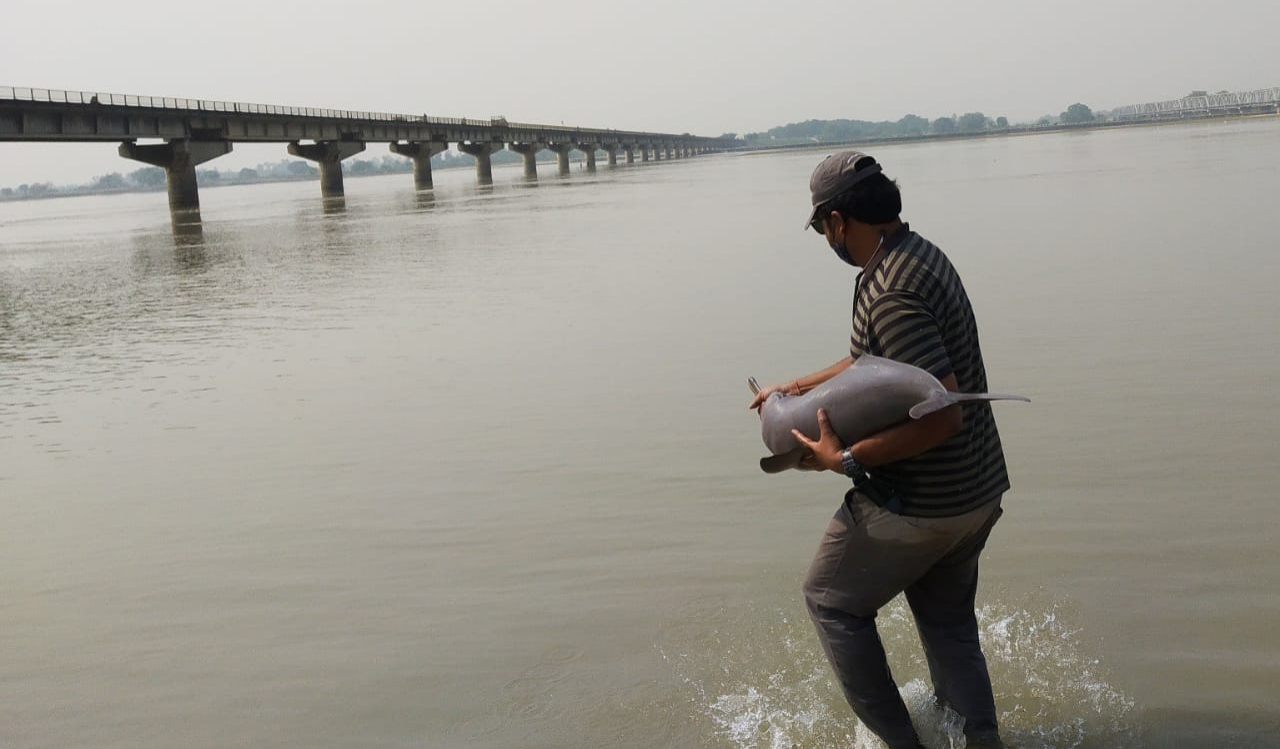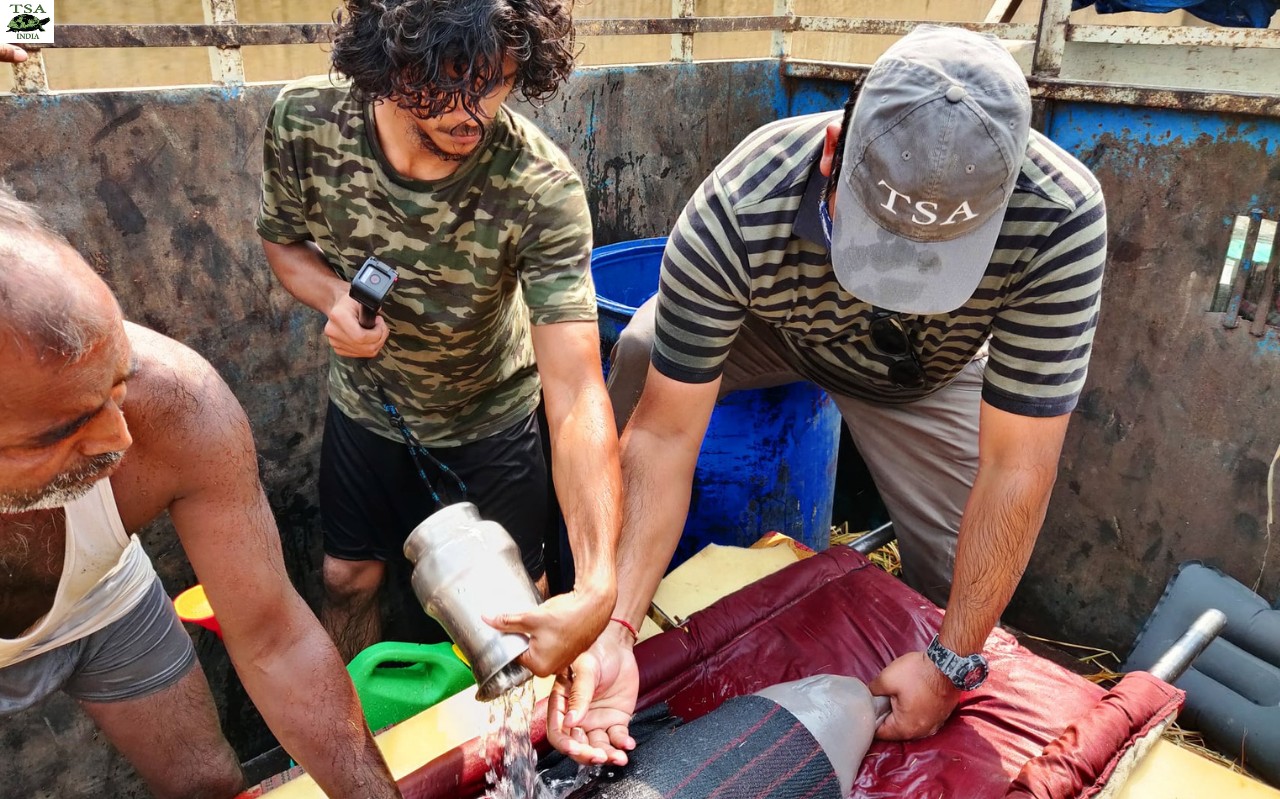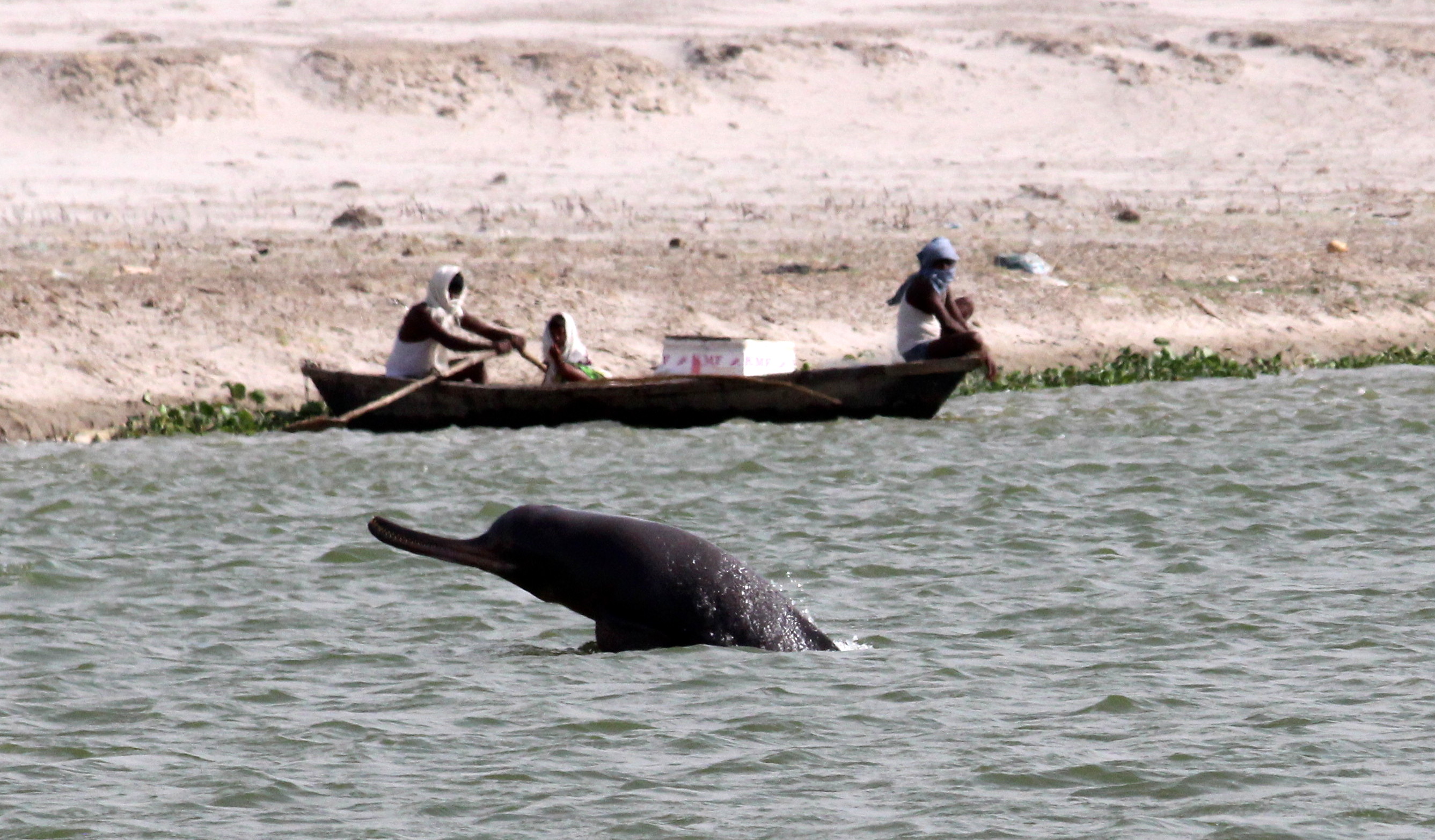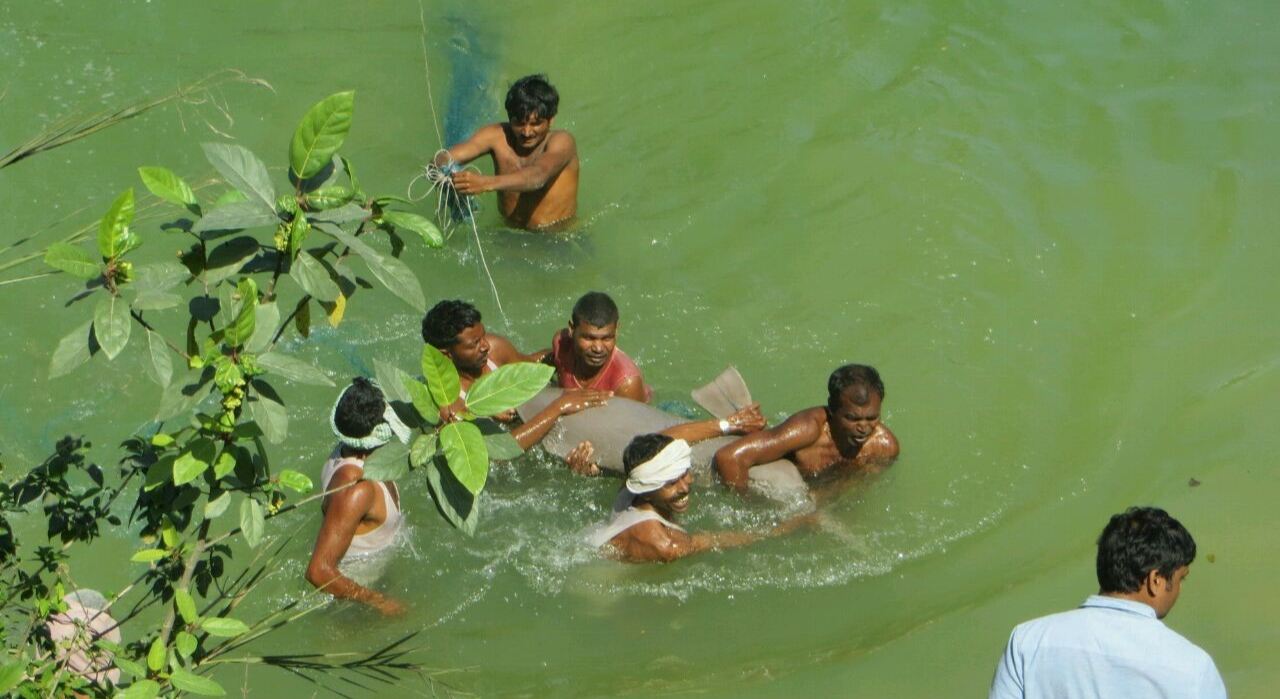
The Turtle Survival Alliance-India and the Ministry of Jal Shakti have come up with a detailed guideline for releasing dolphins who often get stuck in numerous irrigation canals in Uttar Pradesh.
The Ganges river dolphin (Platanista gangetica) is facing several threats due to anthropogenic pressure. Dams, barrages and a vast network of irrigation canals meant for farmers severely restrict their movement. In such a scenario, a guideline released last month by the Ministry of Jal Shakti under the Government of India will help conservationists working on dolphin protection.
Shailendra Singh, the India programme director at Turtle Survival Alliance (TSA), said rescue methods for the safe release of Ganges river dolphins are being standardised as they often enter the numerous irrigation canals in Uttar Pradesh. “In fact, TSA is the only organisation in the country which is rescuing dolphins stuck in shallow waters cut off from main rivers. The Ministry of Environment, Forest and Climate Change has helped prepare the guideline along with the state forest department.”
The Ganges river dolphin, whose population stands at less than 1800 according to the WWF, is an endangered species. At present, insufficient knowledge about how dolphins forage makes it difficult for researchers and forest officials to work on rescue operations. Talking about how a few months back some dolphins got disconnected from the Brahmaputra river, Singh pointed out that such incidents will rise in the next 10-20 years as rivers change course due to climate change. At the same time, man-made structures are also expected to increase in number. “So, a methodology was really needed on how to save dolphins,” the scientist said.
Rescuing river dolphins
The Ganges river dolphin is mainly found in the Ganga and the Brahmaputra and their tributaries spread over India, Nepal and Bangladesh. The Government of India declared the river dolphin as the national aquatic animal. There is another species, the Indus river dolphin, found in Punjab. The dolphin is an indicator of the health of India’s river systems. Besides being threatened by dams and irrigation projects, the animals are also hunted for meat and end up in fishing nets.
Due to the lack of dolphin-friendly gates in irrigation canals, the animals get trapped inside and tend to go in one direction only. TSA, which has been doing work on turtle conservation in India, got involved in dolphin rescue as well. The organisation has rescued 25 dolphins over a span of eight years. Thus, it was easy to come up with the document endorsed by the IUCN specialist group on cetaceans.
A joint survey carried out by the TSA along with the Uttar Pradesh forest department counted 107 animals during the period from February-March. It took place from the Katerniaghat Wildlife Sanctuary in Bahraich district up to Ayodhya. Out of this, 50 percent was male and the rest female as well as juveniles. The survey was done across five districts and the maximum number of dolphins, about 43, was found in Bahraich.
Manish Singh, the divisional forest officer (DFO) of Bahraich, said many canals originate from rivers. “Trouble arises once the water level in canals goes down. If the forest department gets information within 10-12 hours, rescue is possible, but if it goes beyond that, dolphins try to save themselves and a lot of injuries occur. If rescue is late, their survival chance is low,” the officer said.
Much-needed protection

Shailendra Singh said that in India, tigers are protected in their habitats but the same cannot be said about dolphins as only five percent of our rivers lie in protected areas. According to the DFO, in the past five years communities living near canals and rivers have been made aware on dolphin conservation.
“It is true that farmers draw water from canals but they do not operate in all seasons. This is also the time when water will be released for wheat farming and then stopped after a time. As most canals pass through villages having roads on both sides, information mostly comes from villagers on dolphins getting stuck,” Manish Singh added. However, sometimes due to unawareness children throw stones and the animals get injured.
The maximum density of dolphins is found in the Ghaghara, the largest tributary of the Ganges. It originates in Tibet and flows through Nepal. Up to Ayodhya, the river is clean and the maximum number of Ganges river dolphins is found in this stretch due to the lack of industries.

Suresh Babu, director, river basins and water policy at WWF-India, pointed out that though the guideline document is a useful one, there are multiple issues at play. “The lean flow of rivers due to over-extraction is important to note. It often becomes challenging to rescue the animals. There is a need to ensure environmental flow in our rivers so that dolphins are able to fulfil their biological functions. Some of the tributaries of the Ganga need enough water in them.”
The WWF expert added that there is a need to understand how dolphins migrate to man-made canals in the first place. “During monsoon when water release happens, the animals migrate downstream and there is hardly any information on this.” WWF-India has carried out population and distribution assessments of dolphins in Uttar Pradesh and Punjab.
Dolphins need fish to survive. In rivers lying outside protected areas, there is a lot of fishing activity and other disturbances. Babu pointed out as dolphins are poached for their oil, and there is a need to make farmers and fishermen aware. The tributaries of the Ganga, Brahmaputra and the Beas need protection.
Shailendra Singh said that the pinger, an acoustic device which emits sounds, can help in dolphin conservation but at present the TSA is not experimenting with it. However, he pointed out that removing ghost nets will help dolphins to a great extent.














